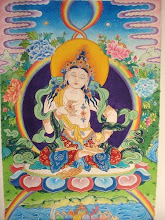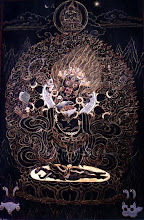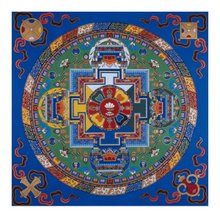The bad news is that India hasn't yet caught up with the rest of the world and begun offering visas on arrival. They also continue to issue visas that are good from the day of issue, and not from the date of entry, which requires many people to have to wait for the last moment to make application. If you're fortunate enough to live in a culture in which efficiency is valued, then you may be able to mail your application, passport and fee to the embassy in your country and have it returned to you by post. If you're unfortunate enough to have to apply for one in Nepal, you'll have to set aside two days for queuing, plus an extra helping of patience.
In previous years applicants had to show up very early in the morning to get a number from the guards at the embassy gate. The earlier you got there, the lower your number, the better chance of getting served early (or at all). During the height of the tourist season, applicants would show up as early as 05:00 to secure a low number. Those more clever and willing to part with a little cash showed up the day before and bought a low number from one of the guards. The gate would open to admit applicants by number at around 08:30. Once on the embassy grounds, travelers then queued in front of the visa application window, which opened an hour later at 09:30, after which the jostling would begin, with people trying to cut in line and move their application ahead of the herd. The line would literally not move for 30 minutes at a time. It seems most applications were processed in the half hour run-up to the noon repast, when the embassy staff would rush to get everything done so that they could get off to lunch. For most applicants, this meant standing in line for 3.5 hours, from 8:30 until just before noon, plus spending 1.5 to 2 hours hanging around outside the gate.
This year the embassy has done away with the numbers at the gate, which means you have to arrive early and queue outside. Once the gates open, you file in by groups of 10 and after passing through security (past which you could easily smuggle weapons) there is now a computer with a touch-sensitive screen, with four buttons: tourist visa, transit visa, and two others related to other types of visas. When you press the tourist visa button, a new screen appears with two buttons: first visit (telex application), and second visit (visa application). Pressing the appropriate button returns a small slip of paper with a number.
When you get to the visa application counter you'll find that the embassy has installed digital sign-boards above the windows. When your number appears here, you can then approach the window and file your application. This makes the process a lot less stressful, as there is no scrum at the counter, you don't have to push past others to get to the window, and you don't have to worry about people jumping queue (so long as the staff is taking applications in order, which appeared to be the case this week). The embassy has also installed chairs in the area in front of the counter, so there is also no longer any need to choose between standing or sitting on the floor for up to three hours.
The hugely frustrating thing that hasn't yet been properly sorted out, though, is that you have to go through this process twice. The first day you apply only for a telex to be sent to the Indian embassy in your home country to inquire if you have been banned from travel in India. For this you must pay 300NPRs (approximately US$4.00). You are then asked to come back 4-5 days later, after the embassy in Nepal has received a reply to the telex inquiry, at which time you may then apply for a visa. Once submitted, you then return after 16:30 the same day to collect your passport.
A word of caution to those making their third or forth application for a tourist visa from Nepal. I met two people (one a Spaniard, the other of undetermined nationality) during my time on queue who had on a third application from Nepal had been denied 6-month visas. They were given 3-months and requested (probably more likely impolitely warned) to apply for future visas from their home countries. Another applicant, an Englishman who was not denied a visa, was called into an office and questioned about why he was making repeated tourist visa applications from Nepal. I also met a gentlemanly soldier from Afghanistan, a 21-year old who had been serving with the New Zealand peace-keeping forces and who was on his third visit to the embassy, having been twice refused a tourist visa without explanation. He was this day applying for a 15-day transit visa, which was again refused without explanation, despite having been promised one by the head of the visa section when his second tourist visa application had been refused.
It appears the embassy staff may be screening applicants more carefully, but by not informing the public of new policies and procedures it also appears to be acting capriciously. If there is any chance at all to do so, it may be better to apply in your home country and avoid unexpected outcomes in Nepal.



























Some very useful information, well done.
ReplyDeleteThanks for the info. I'll get my Visa the easy way.
ReplyDelete